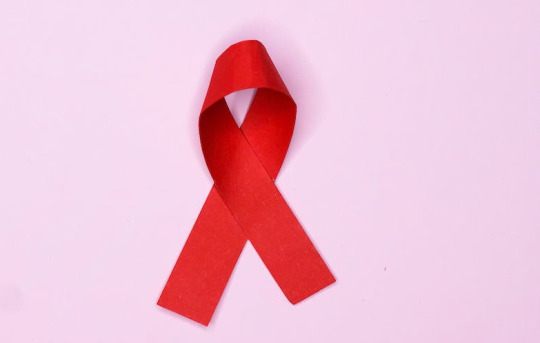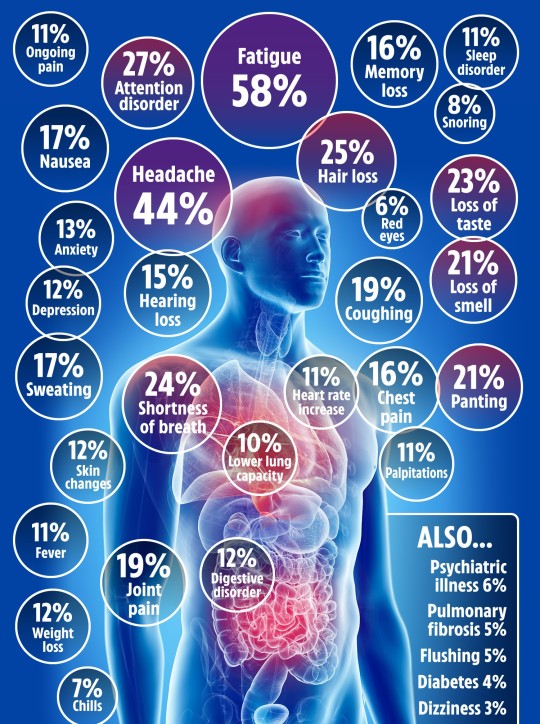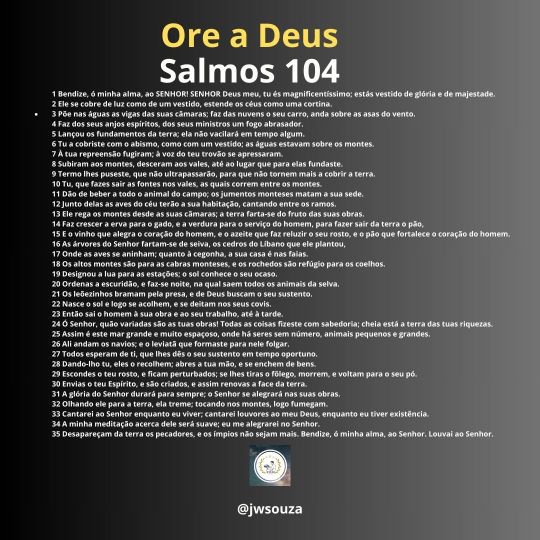#covi 19
Text
So uh... either the vaccine is so good it prevents car accidents or people who don't get the vaccine are kind of stupid.
4 notes
·
View notes
Link
0 notes
Link
Europe dominated the global dental biomaterials market in the year 2018 and similar trend is projected over the forecast period...
0 notes
Link
Adroit Market Research report on global Dental Biomaterials market gives a holistic view of the market from 2015 to 2025, which includes factors such as market drivers, restraints, opportunities, and challenges.
0 notes
Text
Las PANDEMIAS y sus aliados -día mundial de la lucha contra el Sida-
Las PANDEMIAS y sus aliados -día mundial de la lucha contra el Sida-
Ayer, jueves uno de diciembre, se conmemoraba el día internacional de la lucha contra el SIDA. No puede escribir, y no querría dejar de hacer una reflexión al respecto, en memoria de todas las personas que han fallecido en el mundo por este virus traicionero. Y lo denomino así porque hubo, en Occidente, una generación, que sin saber ni de su existencia, cayó en las garras de es bicho mortal, en…

View On WordPress
0 notes
Text
Urgente: Crianças com 4 anos, sem comorbidades, já podem ser vacinadas contra a Covid-19 em Viamão
Urgente: Crianças com 4 anos, sem comorbidades, já podem ser vacinadas contra a Covid-19 em Viamão
A Secretaria Municipal da Saúde de Viamão (SMS) confirmou na manhã de hoje (25), que todas as crianças com 4 anos já podem ser vacinadas contra a Covid-19. Com isso aumenta a faixa etária geral do público, sem restrições, para a imunização.
De acordo com SMS são 8 os locais de referência para que o responsável leve a criança:
– Policlínica Central Doutor Nilson Pinto da Silva
– Unidade de Saúde…

View On WordPress
0 notes
Link
0 notes
Text
कोविड उल्लंघन : दिल्ली में 19 अप्रैल से 12 नवंबर के बीच 3.16 लाख से अधिक लोगों पर जुर्माना
कोविड उल्लंघन : दिल्ली में 19 अप्रैल से 12 नवंबर के बीच 3.16 लाख से अधिक लोगों पर जुर्माना
कोविड-19 संबंधी नियमों का उल्लंघन करने पर इस साल 19 अप्रैल से 12 नवंबर के बीच 3.16 लाख से अधिक लोगों पर जुर्माना लगाया गया, जिनमें से सबसे ज्यादा जुर्माने फेस मास्क नहीं पहनने पर किए गए। दिल्ली पुलिस द्वारा शेयर किए गए ताजा आंकड़ों के मुताबिक, इस दौरान कोविड नियमों के उल्लंघन के लिए 3,16,565 चालान काटे गए।
आंकड़ों के अनुसार, 2,79,878 लोगों पर मास्क नहीं पहनने के लिए जुर्माना लगाया गया, इसके बाद…
View On WordPress
#Covi Guidelines#Covid Norms violations#Covid violations#covid-19#Delhi News#Delhi Police#Hindi News#Hindustan#News in Hindi#Over 3.16 lakh fined#कोविड उल्लंघन : दिल्ली में 19 अप्रैल से 12 नवंबर के बीच 3.16 लाख से अधिक लोगों पर जुर्माना#हिन्दुस्तान
0 notes
Text
"Two-thirds (910 of 1350 [67.4%]) of individuals with long illness were asymptomatic beforehand."
Note the usage of "long illness" instead of Long COVID. This is the upcoming round of minimization and obfuscation rearing its head.

(Infograpic made with info from this 2021 study)
#mask up#covid#covid 19#covid isn't over#pandemic#covid conscious#long covid#covid is airborne#wear a mask#coronavirus
40 notes
·
View notes
Text
2 notes
·
View notes
Link
0 notes
Link
Europe dominated the global dental biomaterials market in the year 2018 and similar trend is projected over the forecast period...
0 notes
Photo










GIRO’22 Stage 20: Hindley Hits Hard On The Marmolada! Pt.7
Alessandro Covi takes the stage win!
On a day that might have been a game of chess from the GC men, turned out to be a stunning day in the mountains for Jai Hindley as he dealt a killed blow to Richard Carapaz. The stage win went to Alessandro Covi who attacked the break of the day and stayed clear to the finish on the Passo Fedaia.
Giro d’Italia Stage 20 Result:
1. Alessandro Covi (Ita) UAE Team Emirates at 4:46:34
2. Domen Novak (Slov) Bahrain-Victorious at 0:32
3. Giulio Ciccone (Ita) Trek-Segafredo at 0:37
Giro d’Italia Overall After Stage 20:
1. Jai Hindley (Aus) BORA-hansgrohe in 86:07:19
2. Richard Carapaz (Ecu) INEOS Grenadiers at 1:25
3. Mikel Landa (Spa) Bahrain-Victorious at 1:51
7 notes
·
View notes
Text
Interview by Stephanie Desmon
Until now, people who suffered mild or asymptomatic COVID-19 were thought to have dodged the brunt of the virus’s brutal side effects. But new evidence has revealed that anyone infected with COVID is at higher risk for heart issues—including clots, inflammation, and arrhythmias—a risk that persists even in relatively healthy people long after the illness has passed.
In this Q&A, adapted from the March 9 episode of Public Health On Call, Ziyad Al-Aly, director of the Clinical Epidemiology Center and chief of Research and Education Service at Veterans Affairs St. Louis Health Care System, talks with Stephanie Desmon about COVID-19 and the heart, including his recent study, which found a significant risk of heart problems in people a year after being diagnosed with COVID.
You just published a study that says that in some people who’ve had COVID, heart issues can persist for a year or more. What does this mean and what did you study?
We've known for a while that during the acute phase—the first 30 days of COVID-19—people who have severe disease and need to be admitted to the hospital or ICU may develop heart complications. We didn't know what happened to people's hearts in the long term—six months to a year out—or what happened to people who had mild disease and did not need hospitalization or ICU care.
We did this study to evaluate the one-year risk of heart problems in people who got COVID-19, compared to nearly 11 million controls of people who did not.
What did you find?
The major finding was that people with COVID-19 have a higher risk of all sorts of heart problems at one year. That included arrhythmias (irregular heart beats or the heart beating too fast or too slow) and atrial fibrillation (a fast heart rhythm in a particular pattern). We found evidence of an increased risk of stroke, of blood clots in the legs and the lungs, and of heart failure and heart attacks. The increased risk of a broad spectrum of heart problems was evident.
I went into it thinking that [the risk] was going to be most pronounced and evident in people who smoked a lot or had diabetes, heart disease, kidney disease, or some [other] risk factors. What we found is that even in people who did not have any heart problems start with, were athletic, did not have a high BMI, were not obese, did not smoke, did not have kidney disease or diabetes—even in people who were previously healthy and had no risk factors or problems with the heart—COVID-19 affected them in such a way that manifested the higher risk of heart problems than people who did not get COVID-19.
It was really eye-opening that the risk was also evident in people who did not have severe COVID-19 that necessitated hospitalization or ICU care. People who got COVID-19 and were asymptomatic, or got COVID-19 that was so mild that they were able to nurse it at home, without going to the doctor still developed an increased risk of heart problems a year out.
What's going on in the body?
A lot of different things could be happening. It's possible that the virus itself and the immune response to it cause an intense inflammation that subsequently hits the heart and results in some of the manifestations we've seen here. It's possible that COVID-19 may attack the endothelial cells that line the vessels of the heart. Some of these cells might die and eventually facilitate the formation of blood clots and blockages of the arteries or vessels of the heart.
There are several other mechanisms that revolve around something called the ACE receptor. The virus has something called a spike protein, which is like a key that engages a lock—the ACE receptor. That allows the virus into cells, including heart cells.
Why would SARS-CoV-2, the virus that causes COVID 19, which we all thought about as a respiratory virus, attack the heart up to a year down the road? That’s likely one of the explanations.
This study was done before vaccination was widely available. Is there any indication that, for example, breakthrough infections would have a different result long term?
Yes. We are [studying] this, but I think the jury is still out. We're certainly very interested in addressing that publicly as soon as we can.
You studied Veterans Administration records, and that population is mostly men, white, and older. Do you feel that [the findings] apply to the entire population?
Yes and no. I think we have to be cognizant that this study comes from one system, the VA system, but that needs to be put into a larger context. This is a study of nearly more than 11 million people. People tell me most vets are males, but 10% are females—meaning our study has more than 1 million females. Similarly, 20% [of study participants] are Black—more than 2 million people.
In addition to this, we did subgroup analyses to see what would happen in only women, only men, only Black people or white people, people younger than a certain age or older than a certain age. Across the board we saw an increased risk of heart problems. This tells us that it doesn't matter if you are a female or male, Black or white, older or younger, diabetic, a smoker, have chronic kidney disease or other cardiovascular risk factors, or not. The risk was across the board, and it’s driven by COVID-19. It really spared no one.
The jury's still out on all of the things that long COVID might encompass. Would this fit into that category?
Absolutely. Long COVID is the umbrella term that describes all the post-acute manifestations that happen as a result of COVID-19. It could be things that started in the acute phase that lingered and persisted into the long term, or it could be new things attributable to SARS-CoV-2 that have happened three, four, or five months out. When you have that definition in mind, it's very clear that the heart manifestations we described in our report are part and parcel of the broader picture of long COVID.
Long COVID can give you fatigue and brain fog and result in new-onset diabetes, kidney problems, and heart problems. All of that collectively forms a multilayered, multifaceted long COVID. That's not to say one patient will have all of these things.
Are we going to have a lot of people who have some form of long COVID and are chronically ill? Will it be a strain on government resources? What do you see as the future?
I think that's why talking about it is very important. We think long COVID can affect anywhere between 4% and 7% of people. That seems really small, but it’s not if you multiply that number by the huge number of people infected with COVID in the U.S., more than 80 million people and counting. We think that will translate into millions of people with long COVID in need of care, and broadly speaking, our health systems need to be prepared. People running health systems or clinics need to start preparing for the tide of patients that are going to hit our doors with heart problems and other long COVID problems.
On a government level, I think we definitely need to be prepared for this. We cannot move on from the pandemic and disregard its long-term consequences. Arguably the long-term consequences are going to be even more profound and stick with us and scar a lot of people around us for generations.
A lot of the manifestations we're describing in this report are chronic conditions that will [affect] people for a lifetime. For example, heart failure isn't something that you wake up tomorrow and all of a sudden don't have. That's not how it works. We're no longer talking about things that might improve tomorrow—we're seeing chronic conditions that will require care for a long time. People, health systems, and governments need to be prepared for that.
1 note
·
View note
Text

1 Bendize, ó minha alma, ao SENHOR! SENHOR Deus meu, tu és magnificentíssimo; estás vestido de glória e de majestade.
2 Ele se cobre de luz como de um vestido, estende os céus como uma cortina.
3 Põe nas águas as vigas das suas câmaras; faz das nuvens o seu carro, anda sobre as asas do vento.
4 Faz dos seus anjos espíritos, dos seus ministros um fogo abrasador.
5 Lançou os fundamentos da terra; ela não vacilará em tempo algum.
6 Tu a cobriste com o abismo, como com um vestido; as águas estavam sobre os montes.
7 À tua repreensão fugiram; à voz do teu trovão se apressaram.
8 Subiram aos montes, desceram aos vales, até ao lugar que para elas fundaste.
9 Termo lhes puseste, que não ultrapassarão, para que não tornem mais a cobrir a terra.
10 Tu, que fazes sair as fontes nos vales, as quais correm entre os montes.
11 Dão de beber a todo o animal do campo; os jumentos monteses matam a sua sede.
12 Junto delas as aves do céu terão a sua habitação, cantando entre os ramos.
13 Ele rega os montes desde as suas câmaras; a terra farta-se do fruto das suas obras.
14 Faz crescer a erva para o gado, e a verdura para o serviço do homem, para fazer sair da terra o pão,
15 E o vinho que alegra o coração do homem, e o azeite que faz reluzir o seu rosto, e o pão que fortalece o coração do homem.
16 As árvores do Senhor fartam-se de seiva, os cedros do Líbano que ele plantou,
17 Onde as aves se aninham; quanto à cegonha, a sua casa é nas faias.
18 Os altos montes são para as cabras monteses, e os rochedos são refúgio para os coelhos.
19 Designou a lua para as estações; o sol conhece o seu ocaso.
20 Ordenas a escuridão, e faz-se noite, na qual saem todos os animais da selva.
21 Os leõezinhos bramam pela presa, e de Deus buscam o seu sustento.
22 Nasce o sol e logo se acolhem, e se deitam nos seus covis.
23 Então sai o homem à sua obra e ao seu trabalho, até à tarde.
24 Ó Senhor, quão variadas são as tuas obras! Todas as coisas fizeste com sabedoria; cheia está a terra das tuas riquezas.
25 Assim é este mar grande e muito espaçoso, onde há seres sem número, animais pequenos e grandes.
26 Ali andam os navios; e o leviatã que formaste para nele folgar.
27 Todos esperam de ti, que lhes dês o seu sustento em tempo oportuno.
28 Dando-lho tu, eles o recolhem; abres a tua mão, e se enchem de bens.
29 Escondes o teu rosto, e ficam perturbados; se lhes tiras o fôlego, morrem, e voltam para o seu pó.
30 Envias o teu Espírito, e são criados, e assim renovas a face da terra.
31 A glória do Senhor durará para sempre; o Senhor se alegrará nas suas obras.
32 Olhando ele para a terra, ela treme; tocando nos montes, logo fumegam.
33 Cantarei ao Senhor enquanto eu viver; cantarei louvores ao meu Deus, enquanto eu tiver existência.
34 A minha meditação acerca dele será suave; eu me alegrarei no Senhor.
35 Desapareçam da terra os pecadores, e os ímpios não sejam mais. Bendize, ó minha alma, ao Senhor. Louvai ao Senhor.
0 notes
Text
During our two decades in the medical system, neither Mark nor I ever prescribed Ivermectin and it always seemed odd that it became an alleged treatment for COVID-19 and the phantom virus ‘SARS-CoV-2’. However, like the “lab leak” narrative, Ivermectin has been a permitted alternative narrative that everyone seems to know about.
In this video we take a look at the history of one of the biggest-selling drugs in the world, including the 2020 mainstream virology paper that claimed it was an “anti-viral” agent. While that paper was able to be shared tens of millions times, by contrast those of us who discussed the virologists’ experiments were receiving strikes and bans on Big Tech platforms. There is something very suspicious about the Ivermectin narrative especially as its mythology continues to grow with new claims that it could be a treatment for cancer.
1 note
·
View note